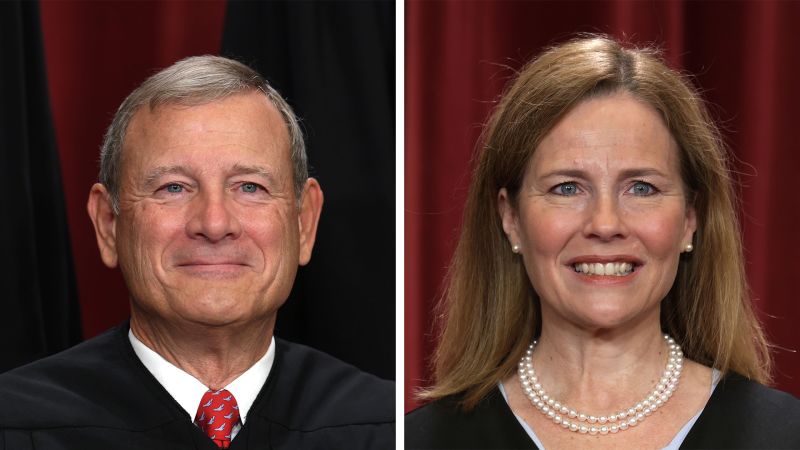Chief Justice John Roberts often downplays his influence over the Supreme Court, lamenting his limited clout among his eight colleagues. Speaking to a group of federal judges, he remarked, “You can’t fire people if they don’t follow you. You can’t cut their pay.” Yet, Roberts wields significant power through his ability to assign opinions when he is in the majority, a position he held more than any other justice this term.
This power is crucial because the rationale behind a Supreme Court decision can set precedents for future cases, influencing lower court judges and shaping the law. Roberts, now in his 20th session, has strategically kept major cases for himself, particularly those involving presidential powers, while also distributing assignments to influence and reward colleagues.
The Power of Opinion Assignment
Roberts’ ability to assign opinions is perhaps his most powerful tool. When in the majority, he decides which justice will write the opinion, a task that carries both prestige and influence. This term, Roberts was in the majority more than any other justice, assigning 54 of the 56 signed opinions. His strategic use of this power can be seen in his decision to assign the most awaited case of the term to Justice Amy Coney Barrett.
In a surprising move, Roberts assigned Barrett the opinion in a case that effectively released President Donald Trump from numerous lower-court orders blocking his policies. The decision, which included the contentious issue of birthright citizenship, was a significant assignment for Barrett, who had faced criticism from Trump supporters for perceived disloyalty.
“I just have great respect for her,” President Trump said of Barrett after the decision in Trump v. Casa was issued. “I always have. And her decision was brilliantly written today – from all accounts.”
Historical Context and Strategic Assignments
Roberts’ strategic assignments are reminiscent of past chief justices. Chief Justice Warren Burger, for example, was known to switch his vote to ensure he was in the majority, favoring colleagues who shared his ideology. In contrast, Chief Justice William Rehnquist, for whom Roberts once clerked, was less manipulative, rewarding justices who wrote quickly and efficiently.
Roberts, who succeeded Rehnquist in 2005, has often kept the most significant cases for himself, particularly those involving executive branch clashes. He has authored decisions on Trump’s travel ban, census citizenship questions, and efforts to keep business dealings secret. However, his choice to assign Barrett a major opinion reflects his strategic acumen and desire to strengthen alliances within the court.
Roberts’ Influence on Court Dynamics
Roberts’ influence extends beyond opinion assignments. As chief justice, he oversees oral arguments and runs the closed-door conferences where justices discuss and vote on cases. His seniority allows him to shape the court’s agenda, and he has been known to distribute cases evenly among the justices, ensuring a balance of workload and influence.
Roberts has also been known to assign cases that cut against ideological expectations. For instance, he assigned liberal Justice Ketanji Brown Jackson a “reverse discrimination” case and tapped Justice Sonia Sotomayor for a church-state clash favoring religious interests. These decisions demonstrate Roberts’ ability to navigate the court’s ideological divides and foster collaboration.
Barrett’s Role and Future Implications
Justice Amy Coney Barrett, appointed by Trump in 2020, has quickly become a pivotal figure on the court. Her cautious yet effective approach has allowed her to play a significant role in shaping decisions, often casting decisive votes or drafting compromise rationales. Her recent opinion in the Trump case, which restricted district court judges’ authority to impose nationwide injunctions, reflects her growing influence.
Barrett’s opinion, which drew on Justice Antonin Scalia’s originalist method, was a resounding victory for Trump’s legal team. It also showcased her ability to craft decisions that resonate with her conservative colleagues while maintaining the court’s integrity. As Barrett continues to navigate her role, her influence on the court is likely to grow, shaping its direction for years to come.
Roberts’ strategic assignments and Barrett’s rising influence highlight the complex dynamics at play within the Supreme Court. As the court continues to tackle contentious issues, the interplay between its justices will remain a critical factor in shaping the law and its impact on American society.
 Spain Wildfire Claims Lives Amid Record European Heat Wave
Spain Wildfire Claims Lives Amid Record European Heat Wave Tragic Loss: The Lives and Dreams of Four Slain Idaho Students
Tragic Loss: The Lives and Dreams of Four Slain Idaho Students North Korea to Send 30,000 Troops to Support Russia in Ukraine Conflict
North Korea to Send 30,000 Troops to Support Russia in Ukraine Conflict Rusted Car Discovery May Solve 15-Year-Old Cold Case on Long Island
Rusted Car Discovery May Solve 15-Year-Old Cold Case on Long Island UK Bonds Plummet Amid Political Uncertainty Over Finance Minister
UK Bonds Plummet Amid Political Uncertainty Over Finance Minister